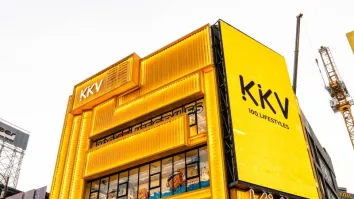
Reshaping the retail market with self-service systems
The virtual fireside chat highlights the importance of the solution in improving customer experience amidst a highly digitalised retail industry.
With the huge shift in the retail industry caused by the pandemic and amidst the gradual digitalisation of retail operations, retailers are now at a crossroads with how services should be delivered to customers. These factors have contributed to how usual it has become for customers to interact with the latest technologies in satisfying their needs, as well as how important it is for them to prioritise their safety in stores over anything.
At the same time, the gradual return of brick-and-mortar stores, which have been integrated with new technologies means that retailers should now continually enhance the customer experience as customer demand starts to increase.
Such factors have led to the creation and popularity of self-service in retail.
Self-servicing in retail was designed as a way of reducing the operating costs of running the stores and ultimately becoming less reliant on the attendance within the store whilst still being able to manage checkouts and serve customers.
As this trend becomes more in demand, retailers are now challenged to catch up and integrate self-servicing into their operations.
In partnership with global retail technology company Diebold Nixdorf, Retail Asia has conducted a virtual fireside chat to dive deep into how the retail industry is reshaping with this trend amidst market uncertainties.
In the At a crossroad: Rethinking Retail to Fit the New World fireside chat, industry experts delved into the overall impact of having a self-service system in retail, how it improves a business’s operational performance, as well as its contributions to enhancing customer experience.
Diebold Nixdorf Director of Advanced Self-Service Solutions Matt Redwood highlighted how the business case for the implementation of self-servicing has stacked up. He mentioned that self-service has given retailers more flexibility to untether staff and free them up from legacy point of sale (POS) technology to perform other tasks in a store that are more strategic and bring more value to the organization. This also allows for more efficiency in their operations.
Moreover, he noted that consumers have now come to demand the service and put pressure on retailers to implement such a service. He said that customers have now become used to having control in terms of their interactions with store staff and how their transactions are being run.
In implementing self-service systems, it is important to pinpoint the problem of how and why this solution is being observed in the first place. Redwood advised retailers to start with the problem statement and analyse stores to understand the customer journeys that need to be supported.
“What does good look like to those consumers, and then find the right technology to underpin those journeys and deliver against that problem statement that you are trying to solve,” he said.
He added that retailers can configure and tailor the technology to their stores, leading to a more personalised customer experience and driving much better store loads and brand loyalty.
This sentiment is echoed by Central Retail Corporation Chief Digital Officer David Llamas, who said that retailers should thoroughly consider the implementation of self-service solutions. Llamas mentioned that guaranteed adequate location, space, and support, as well as the necessary signage and help, are all key aspects that need consideration during early consumer adoption.
He added that retailers also need to prepare product information management, price and barcode tagging, and convenient forms of payment before launching sub-servicing options.
Challenges in adopting self-service systems
Redwood observed that retailers deploying self-service systems treat it as a piece of technology, noting as well that such a mentality does not work with the solution itself.
Meanwhile, Diebold Nixdorf Retail Sales Director Anand Mehta posed a question to retailers who aim to implement self-service: Are there enough workers available to begin with?
Mehta mentioned that the emergence of the gig economy threatens staff retention and attraction for retailers and should also be addressed. He added that whatever staff and team members retailers have should be immediately repurposed to do more value-adding activities.
“I think a good store team and self-service are perfectly complementary in today's environment,” Mehta said.
Another threat to self-service is the lack of interest to adopt the system, as cited by 6% of retailers in a survey. Redwood noted that retailers run the risk of a bad consumer experience when they fail to improve their systems and do not get their operations and technology mix right.
He added that self-service now plays a major role in retail operations as it allows retailers to take more flexibility and not be tethered to a rigid operational structure.
“It frees up your staff to deliver the consumer experience where it matters in the aisles and allows the consumers to take control over their transaction and check out from the stores themselves,” Redwood said.
On the other hand, Mehta emphasised that self-service is not a one-size-fits-all solution. He said that this needs to be narrowed down and let the point of sale data do the talking.
At the same time, he advised that retailers should have capacity planning to decide what can be full service and what can change into self-service. He also advised retailers to consider the store configuration and types of checkouts they have, as well as the space planning to increase checkout capacity whilst reducing store footprint.
Mehta also mentioned that the system design should be intuitive by nature, which means enabling customers to adopt such a system should be easy.
“Because of the nature of the solution, it has to be intuitive. But, interventions are the main thing we need to manage. We know the usual suspects, right? So we have a very prescriptive sort of training methodology in how to manage all of these interventions,” he said.
Mehta added that the best thing to do in enabling staff is essential to just get them familiar, paving the way to a whole lot of opportunities for both retailers and customers.
Capturing opportunities
Redwood mentioned that having an effective self-service capability improves customer satisfaction and cost optimisation for retailers.
“Due to the competitive nature of the landscape of retail nowadays, the consumer knows that if they don't get a good experience at one store, they can go down the street to the next door,” he said.
He added that if deployed in the right way, self-service becomes operationalised and builds a knock-on effect.
Redwood pointed out that retailers should have more capacity on their front end to have a faster flow of customers through the checkout area. The knock-on effect is seen in reduced queues and fewer walkaways, which leads to more revenue.
Meanwhile, Llamas noted that despite all these technologies, it is still very important to listen to customers to determine what works and what does not.
“It's not simply a systemic way to roll out a bunch of self-checkout machines, it is really to understand how we can make those services more convenient to our consumers and how we can increase customer satisfaction in the store,” he said.

















 Advertise
Advertise





